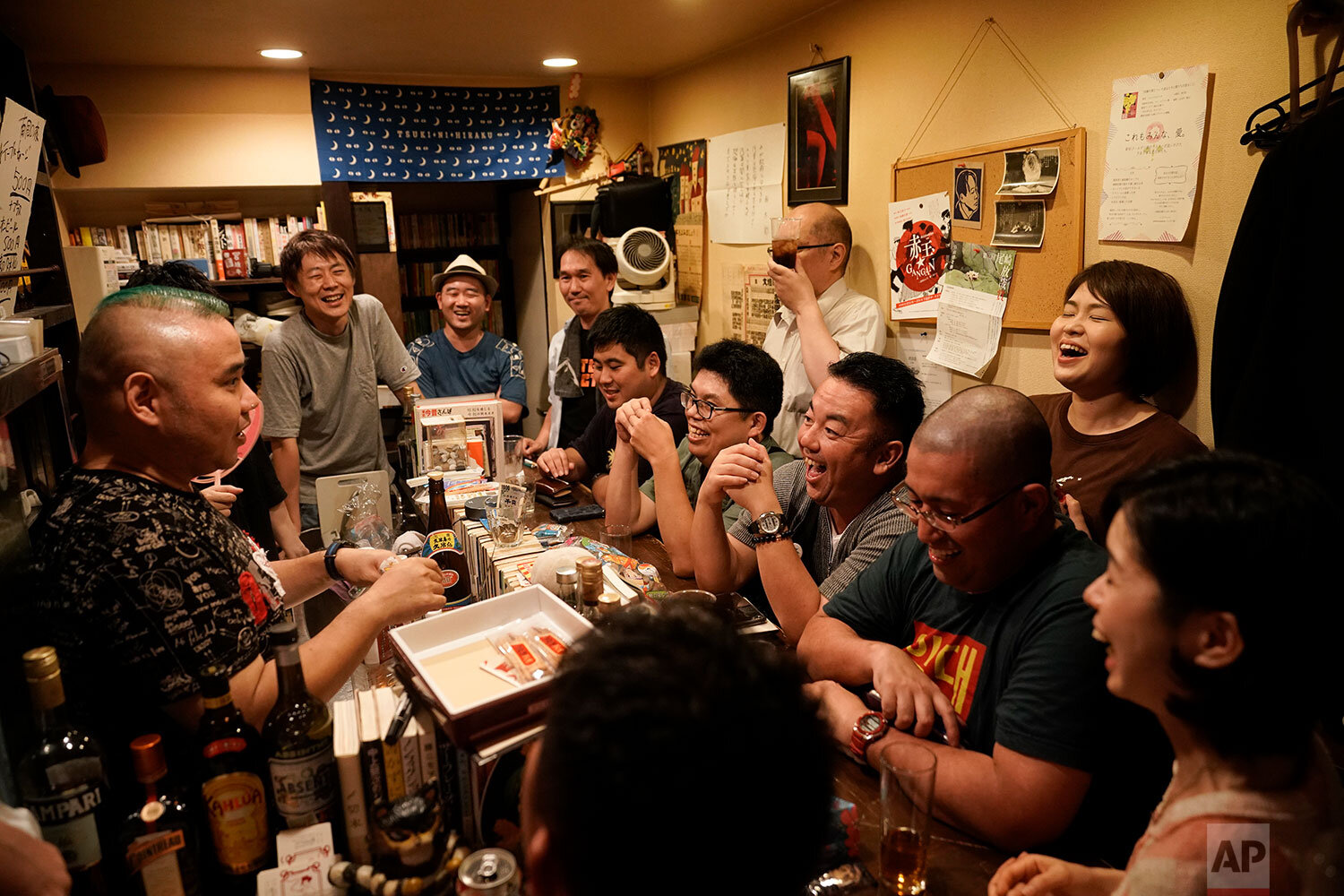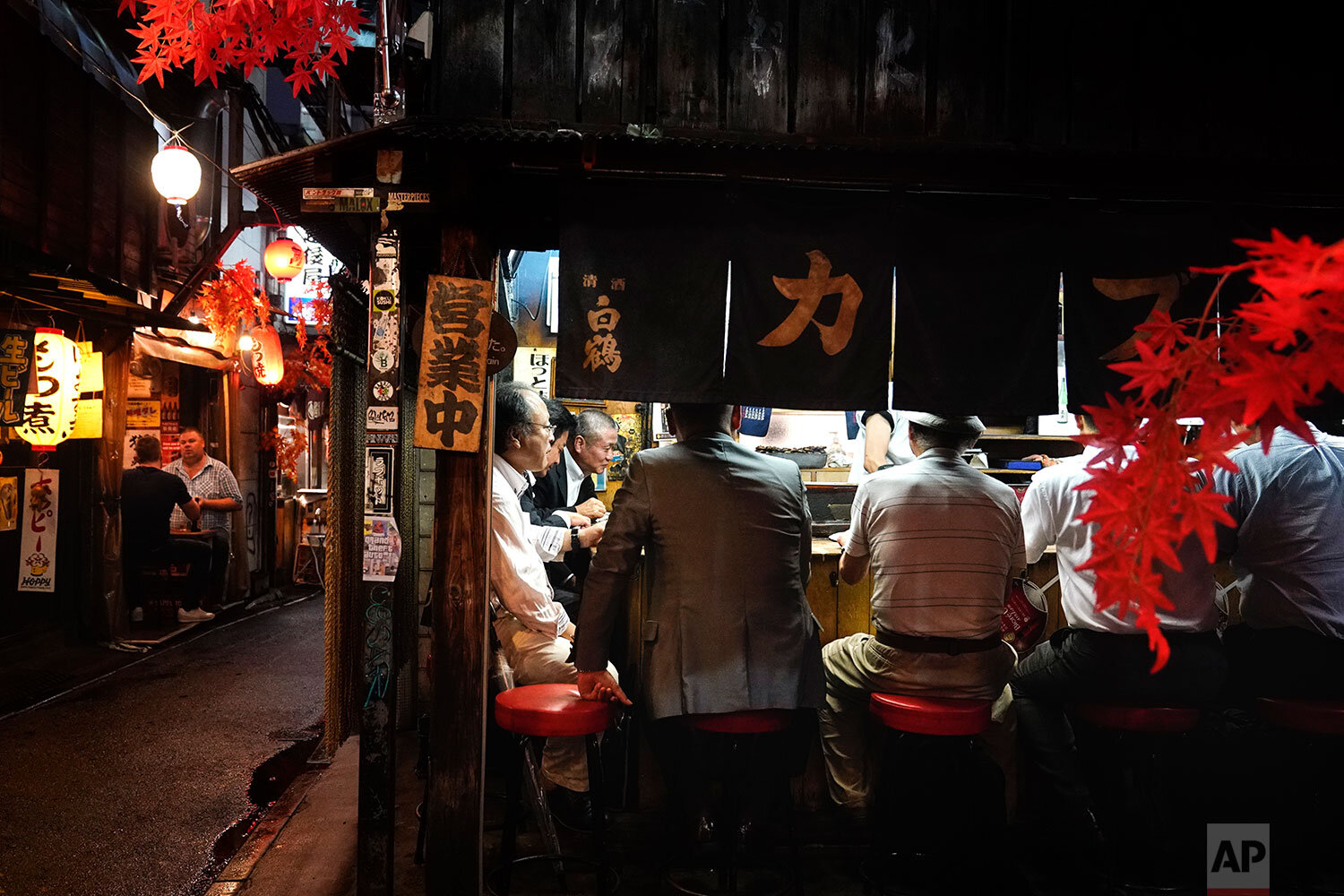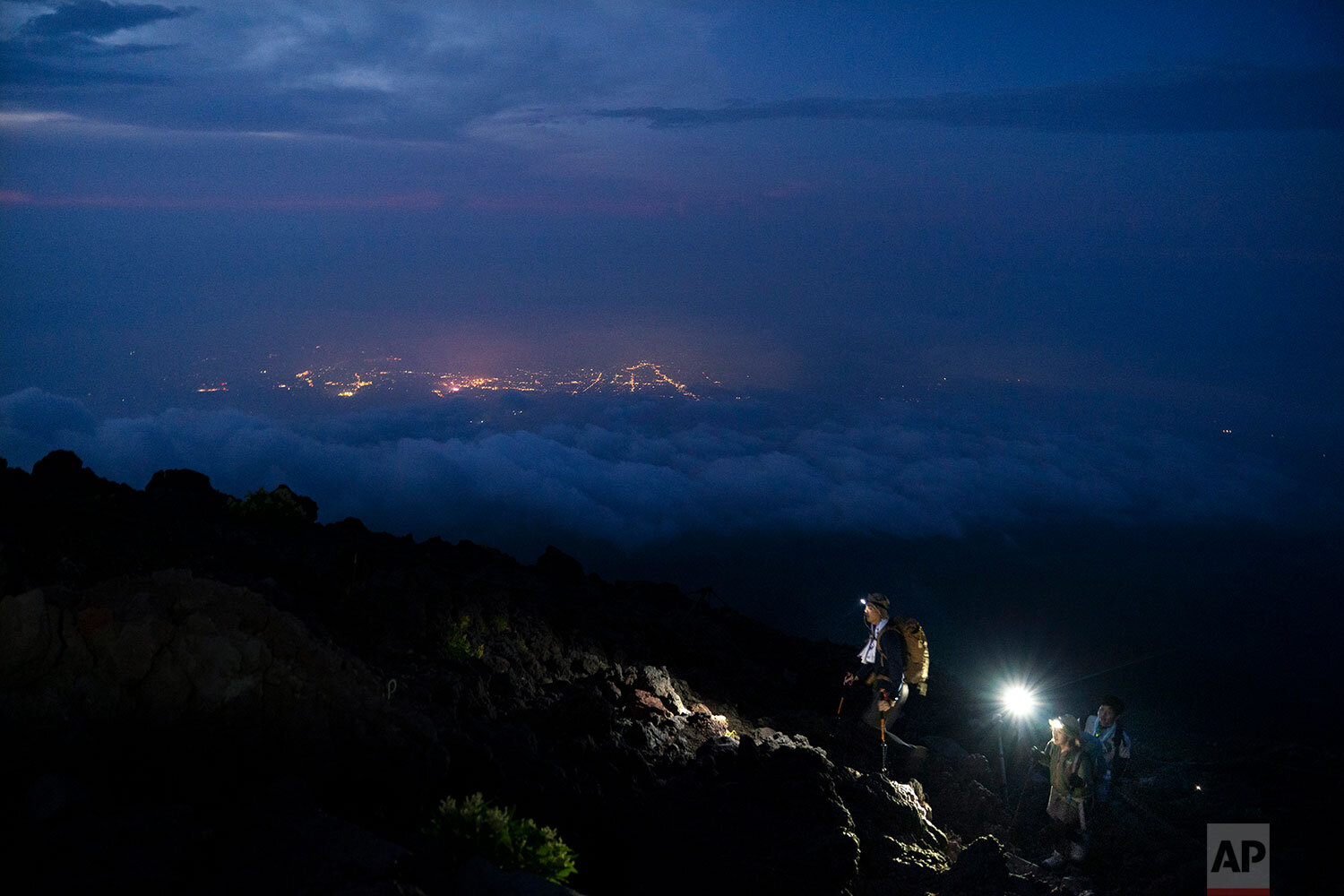Focus on Tokyo: A modern city steeped in tradition

The Shot is a monthly series showcasing top photojournalism from staff photographers at The Associated Press.
Each month, AP photographers will share the stories behind some of their iconic imagery.
In the fourth post of this series, photographer Jae C. Hong talks about his experience photographing assignments in Tokyo in the year leading up to the 2020 Summer Olympics.
Produced by AP News staff. The presenting sponsor was not involved in the creation of this content.
Jae C. Hong
In the shadow of the gleaming Tokyo Tower, thousands of candles placed by an ancient temple in the shape of the Milky Way created an illusion of lights soaring into the sky. Jaw-droppingly digital art installations not far from old alleys crammed with tiny bars and noodle stalls. Visitors are welcomed by robots in banks and by taxi drivers with impeccable manners.
This is Tokyo: a modern megacity built on centuries-old layers of tradition.
Tokyo’s dynamic blend of cultures creates a visual harmony that impressed me immediately when I arrived in May 2019 from Los Angeles to document the city leading up to the 2020 Olympics.
It’s a city that’s best spent exploring with no destination in mind, hoping for serendipitous discoveries.
That’s what I was doing about two weeks after my arrival, when I randomly decided to leave the train at Yoyogi Station. Standing outside the station, trying to figure out how to spend the day wisely, I noticed groups of students dressed like J-Pop stars with flamboyant hairstyles. All of them were heading in the same direction. There were too many to ignore.
I followed them out of curiosity. Maybe it was a photographer’s instinct. I thought their fashion alone could be a nice way to feature Tokyo’s young demographic. They turned out to be students attending Yamano Beauty College, one of the largest beauty schools in Japan. It was the day everything fell into place for me.
My terrible Japanese, learned when I was a freshman in college, wasn’t needed. The school administrator spoke excellent English and permitted me to photograph. Yamano was celebrating its 83rd anniversary that day. More than a thousand students in uniforms gathered in the auditorium.
Each time guest speakers - successful makeup artists or famed hairstylists - went to the podium, the students stood and bowed their heads to show their respect in what seemed like a synchronized performance. There was not a single rebel. Not one kid acted up. The images of these kids honoring the school’s alumni were how I hoped to illustrate Tokyo, where good manners and courtesy were highly emphasized and expected.
As a Californian who grew up in Orange County, where finding a parking space had never been an issue other than around famous beaches on summer weekends, Tokyo was dense. Tokyoites’ use of space was intriguing. They were masters of making the most of space.
I photographed many small creative spaces in Tokyo - from capsule hotels to a clothing shop in a Volkswagen van. Still, my vote would go to the Golden Gai in Shinjuku district, where nearly 280 bars were squeezed into an area about the size of half a soccer field.
Most bars could seat seven or eight at the most. Some places would be as packed as a rush-hour subway train on certain Fridays. Unlike on the train, mobile phones rang out and people talked as loud as they wanted to. Tipsy salarymen belted out songs. Toasts were shared among strangers. Waves of laughter filled the narrow alleyways.
Formality turned into intimacy at the Golden Gai. Getting permission to photograph was a breeze. It was even easier as a paying customer.
My most memorable assignment, by far, was climbing Mt. Fuji. I climbed to the top of Japan’s tallest mountain not only once but twice in less than a month - an accomplishment for someone like me.
I spent a lot of time researching. I watched a dozen YouTube videos multiple times and read countless blog posts. I was still nervous. Knowing I’d need to make frequent stops along the way to take pictures, I decided to go alone without a guide.
The bus departed around noon from Tokyo’s Shinjuku and arrived two hours later at the Fuji Subaru Line 5th Station, the hike’s most popular starting point.
Along the way, I stopped and waited for photos. Unfortunately, I repeated that process too many times, not realizing the scenery was more picturesque at a higher elevation. A rookie’s mistake. It was getting darker.
Although I lost a lot of available light, the Sony A9 was enormously helpful with its built-in image stabilizer. The function allowed me to photograph at a low shutter speed without motion blur, something I couldn’t do with a DSLR. I photographed climbers making their way along a trail with the glimmer of a town’s lights visible in the distance.
About six hours into my trek, I checked into a mountain hut to rest a bit. I recognized two items on the menu - instant noodles or curry rice. It was the best curry rice I had ever had.
It was a short break indeed. Some of the climbers were getting ready for the hike to the top shortly after midnight. I snapped a few frames of a man inhaling oxygen in the dead quiet cabin. I was able to capture the moment silently without disturbing people sleeping right in front of me.
Standing next to a torii gate, hundreds of climbers were gazing toward the horizon as the morning light of dawn brightened the sky. Moments later, the sun peeked over the horizon surrounded by a deep orange glow. While many recorded nature’s spectacle with their smartphones or cameras, some prayed with their palms joined together, for it was a sacred tradition from them.
On my second trip to Mt. Fuji, the weather changed every minute. The top of the mountain was cold, much colder than the first trip. I put on every layer I brought with me.
There was nothing but clouds as far as I could see. A climber stopped on his way to the top and pulled a smartphone from his pocket to take pictures. The man looked like a speck of dust against the sea of clouds.
The sunrise wasn’t how I hoped it to be due to the weather conditions. So I looked around to find something different, anything that I had missed on my first trip. I spotted several groups of people making their way around the crater toward the opposite side of the peak.
I knew I needed to follow them. What I ran into was another serendipity - the shadow of Japan’s tallest mountain looming large on the bed of clouds beneath it. It was a sight to behold. The endeavor was worth it.
Vivid moments like these still flash through my mind, though it’s been more than a year since I came back to the States.
Now I’m getting ready to return to Tokyo, to cover the postponed Olympics. It won’t be the same because of the pandemic. I won’t have the same freedom. My boundaries are limited.
It will be just a month instead of a year, but I’m as excited as I was two years ago and looking forward to new and joyful discoveries.
Spotlight is the blog of AP Images, the world’s largest collection of historical and contemporary photos.
Produced by AP News staff. The presenting sponsor was not involved in the creation of this content.





















